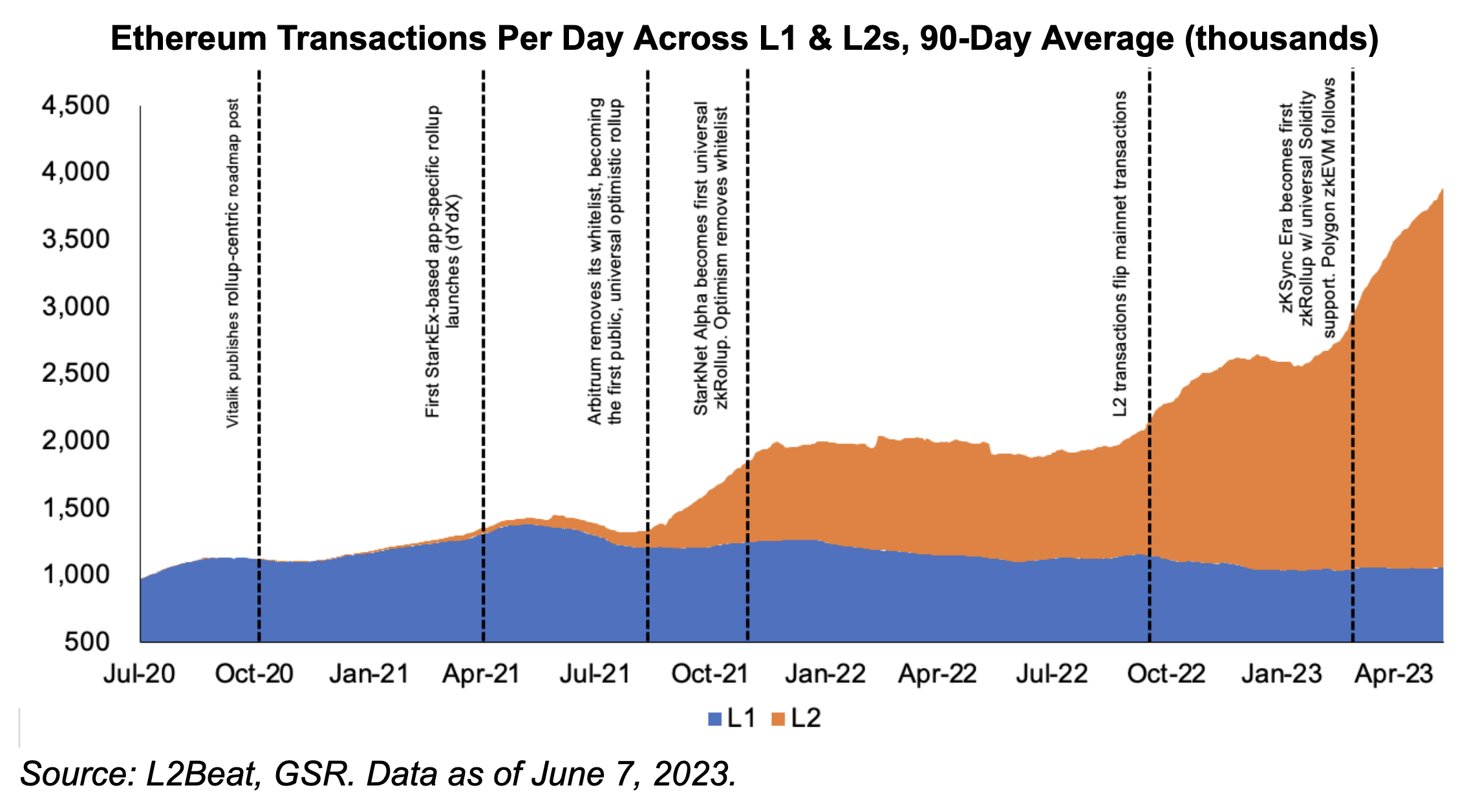Ethereum Ecosystem Is Getting Busier, Not Quieter, Amid Layer 2 Shift
From developer and decentralized application (dapp) counts to progress along its roadmap to general public awareness, there are many metrics that may be used to measure Ethereum’s progress over time. One of the most popular is transaction count, which is notable not only due to its correlation with items like adoption and fee generation, but also as it measures actual usage of the protocol itself.
Unfortunately, transactions on Ethereum are now down about 26% from their May 2021 peak, possibly suggesting that Ethereum is, at best, temporarily moving backwards and, at worst, in long-term decline.
However, neither is true.
You’re reading Crypto Long & Short, our weekly newsletter featuring insights, news and analysis for the professional investor. Sign up here to get it in your inbox every Wednesday.
To better understand why Ethereum is thriving despite a falling transaction count, one must understand Ethereum’s plans for the future. While Ethereum can directly facilitate all blockchain activities on the mainnet (consensus, execution, data availability and settlement), it is pioneering a more modular approach, enabling certain functionality to be outsourced to separate, optimized protocols for improved performance. Chief among these is execution, with transactions outsourced to layer 2 (L2) rollups for more efficient execution.
Multiple transactions are bundled together and executed in batches on an L2 (i.e., off of the Ethereum mainnet), and then a smaller amount of data is sent back to Ethereum. This practice vastly increases throughput, and, as the state of the rollup can be recreated and verified using the data posted on the Ethereum mainnet, rollups inherit many of the security properties of the mainnet itself. This strategy was a shift in Ethereum’s scaling roadmap proposed by Vitalik Buterin in 2020, dubbed the rollup-centric roadmap, which prioritized outsourcing execution to rollups and bolstering Ethereum’s data availability layer to reduce the cost of posting data back to the mainnet. In short, it shifted the focus of the Ethereum mainnet to consensus, settlement and data availability.

With that as background, we can now view Ethereum’s declining mainnet transaction count in a different light. And when adding in L2 transactions, we see that total Ethereum ecosystem transactions, including both those on the mainnet and its associated layer 2s, are up a strong 146% over the last two years. Not only does this show that usage of Ethereum continues to rapidly increase, but also it shows that it continues to progress along its roadmap exactly as intended.
Lastly, we see strong growth and a shift toward off-chain execution continuing for several reasons. First, the Ethereum protocol continues to move in this direction and will particularly do so with its next upgrade, including proto-danksharding, which expands Ethereum’s data availability capabilities. Moreover, not only is the base layer itself improving, but so, too, are the layer 2s, with improved decentralization and new paradigms around interconnectivity and shared security ahead. And these base and secondary layer improvements will come together to enable new use cases and functionality, creating a virtuous cycle. Portended by rising ecosystem transaction counts, Ethereum is perhaps on its way to becoming the world’s settlement layer.
Edited by Nick Baker.









